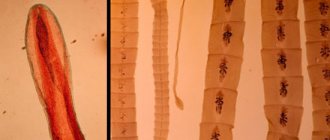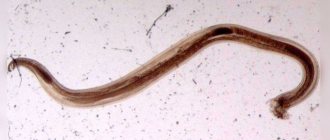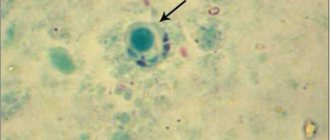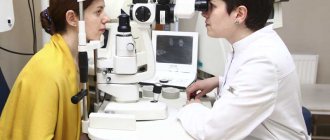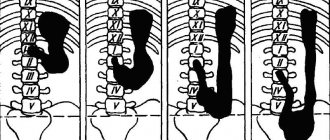General information
Diphyllobothriasis or otherwise called dibothriocephalosis of the helminthic group and refers to cestodosis diseases, code assigned to ICD-10: B70.0 , while larval diphyllobothriasis is assigned its own separate code: B70.1 .
The disease is usually caused by mature forms of Diphyllobothrium pacificum, latum, and in more rare cases - dendriticum and klebanovskii. sparganosis develops .
Most often, the disease leads to dyspeptic disorders and diphyllobothriasis megaloblastic cobalamin-deficiency anemia .
Prevention of wide tapeworm infestation
To protect yourself from infection with Latena wide, you need to carefully monitor the complete culinary processing of fish: fry it for at least 30-40 minutes, salt it for 10 days, freeze fish products to destroy parasite larvae.
Fishermen and workers in the processing industry should undergo timely medical examinations, especially during the peak activity of parasite larvae. When the first symptoms of the disease appear, you should immediately undergo an in-depth examination by a parasitologist.
Author of the article:
Danilova Tatyana Vyacheslavovna |
Infectious disease specialist Education: in 2008, received a diploma in the specialty “General Medicine (Therapeutic and Preventive Care)” at the Russian Research Medical University named after N. I. Pirogov. I immediately completed an internship and received a diploma as a therapist. Our authors
Pathogenesis
There are several aspects of the pathogenic influence of tapeworms:
- local mechanical damage to the wall of the small intestine, increasing with increasing intensity of invasion (can cause intestinal obstruction, since attachment occurs in the mucous membranes and due to pinching, which entails microulcerations, catarrhal inflammation and atrophy );
- nervous and reflex irritation of interreceptors of neuronal endings localized in the intestinal wall leads to disruption of the functioning of the stomach and other parts of the gastrointestinal tract;
- a toxic allergic reaction of the body leads to fundamental manifestations of the disease and sensitization as a result of toxic-allergic influences possessed by the waste products of helminths , their antigens, which causes the development of exhaustion, jaundice , decreased immunity , bone marrow hyperplasia, dystrophic changes in the liver, myocardium and blood eosinophilia , most pronounced at the onset of the disease;
- lack of cobalamin or folic acid due to their absorption by strobili of parasites.
Causes
The causative agent of diphyllobothriasis is sexually mature individuals from the genus Diphyllobothrium: tapeworms of such species as:
- wide tapeworm - most often (Diphyllobothrium latum);
- Diphyllobothrium dendriticum;
- Diphyllobothrium Klebanovskii.
Parasites are usually 10-12 m long, their body is equipped with an oblong flattened head - a scolex, which has 2 slits for suction, otherwise called bothria. The body can have up to 4 thousand segments or proglottids. A tapeworm can live in a human body for up to 25 years, more often it is one individual, but there are known facts when the number of parasites exceeded hundreds.
Canned tapeworm preparation
Zooanthroponotic invasion of tapeworm is facilitated by the presence of concomitant diseases, poor nutrition and, most importantly, consumption of fresh or raw, insufficiently salted fish and caviar. The main second intermediate (additional) hosts of parasites are fish species such as burbot, pike, perch, and some species of salmon. of plerocercoids can also be found in the body of large predatory fish that eat smaller ones . The final host of the tapeworm can be a person, a dog, a cat, a bear, a fox and a pig. Intermediate hosts are various freshwater crustaceans - not only cyclops, but also diaptomus, additional hosts are fish that live in freshwater bodies.
Cases of infections and outbreaks of diphyllobothriasis are usually recorded in areas where there are many freshwater bodies. In Russia, these are Karelia, Murmansk, Leningrad regions, the basins of the Yenisei, Lena, Ob, Indigirka, Pechora, Northern Dvina, Volga, Kami, Gorky, Kuibyshev, Volgograd and Krasnoyarsk reservoirs.
Diphyllobothriasis caused by D. Dendriticum is more common in the northern regions - Siberia and the Baikal region. Nosoareas of diphyllobothriasis, which causes D. klebanovskii, are usually located in shelf island, peninsular, and continental zones in the Far Eastern seas and their river basins. They usually flow into the Pacific Ocean, with the exception of the northern part of the North Okhotsk lands of the western Okhotsk region - the habitat of Far Eastern salmon. Sparganosis is most often contracted in Japan or China.
Broad tapeworm: life cycle and methods of invasion
Parasitism of tapeworms in the human body usually occurs in the small intestine. The life cycle begins with the release of eggs into the external environment along with feces. Favorable conditions for the release of ciliated larvae (coracidium) from the egg are a freshwater body of water and a temperature of 10-20° Celsius, otherwise they can maintain their viability for 6 months. Subsequently, the larvae swallow cyclops crustaceans and there they reach the second larval stage - procercoid .
Cyclops crustacean
At the next stage, it is necessary for the crustacean to be swallowed by a fish, where the larva, having reached the liver, other organs, eggs or muscle fibers, can develop to an invasive stage resembling a worm - a plerocercoid. Infection of people or animals occurs when eating infected fish, where the plerocercoid has the opportunity to develop into a sexually mature hermaphroditic organism - a marina, which will begin the cycle again.
Life cycle of the common tapeworm
Drug treatment
Before drug treatment, the patient is prescribed vitamin B12. It may take up to 30 days for iron levels in the blood to be restored. Next, the following drugs are prescribed for treatment of diphyllobothriasis:
- "Azinox";
- "Biltricide";
- "Praziquantel";
- "Niclosamide";
- "Albendazole".
Today, diphyllobothriasis is often treated with Biltricide, its effectiveness is almost 100%. The drug "Niclosamide" cures invasion in a dosage of 2 grams orally. But the cost of this drug is more expensive than its analogues, and it is banned in some countries. After getting rid of parasites, the patient must undergo a rehabilitation course, which includes a healthy diet and taking vitamins.
Symptoms of diphyllobothriasis in humans
In individual cases - a stronger sensitivity to the parasite's toxins or the severity of the invasion, the symptoms of diphyllobothriasis may differ, but most often the person experiences nausea, vomiting, loss of appetite , abdominal pain and other digestive disorders. On average, the duration of the incubation period is 20-60 days, and subsequently the following is observed:
- stool instability;
- bloating and movement in the abdomen;
- increased salivation;
- decreased ability to work;
- increased fatigue and loss of strength;
- irritability;
- often drowsiness and paresthesia;
- not very pleasant sensations in the mouth when you need to eat something sour, salty, medications;
- hives;
- low-grade fever;
- epileptiform seizures ;
- enlarged liver and/or spleen;
- ahilia;
- cardiac dysfunction – tachycardia , murmurs , dilatation;
- unsteady gait.
In approximately 2% of cases, the invasion provokes pernicious-like cobalamin-deficiency anemia. As a result, the signs of Gunther's glossitis , weakness, fatigue, drowsiness, frequent dizziness, palpitations, and tinnitus become even more pronounced. Externally, you may notice pale skin, swelling of the face, and possible swelling of the legs.
Blood changes in human diphyllobothriasis, which is caused by tapeworm
The disease is characterized by the development of a megaloblastic embryonic type of hematopoiesis, which leads to the release into the bloodstream of immature young forms of erythrocytes, represented by megaloblasts, normoblasts, erythrocytes with remnants of nuclei, Cabot rings, Jolly bodies, polychromatophils and poikilocytes.
Also characteristic symptoms in humans are the development of leukopenia and thrombocytopenia. Changes in the hemogram occur in the direction of a decrease in the number of red blood cells, an increase in their saturation with hemoglobin, a high color indicator of hyperchromic anemia, and an acceleration of ESR .
Attention! A clear sign of the disease may be the release of the strobilus tape with feces - the back part of the body, which was thrown back by the wide tapeworm.
Diagnostic methods
To diagnose diphyllobothriasis, a detailed questioning of the patient is of no small importance. What matters is the person’s place of work, the nature of the food consumed, in particular fish, and fishing trips in the next few months. Patients should also be asked about the appearance of helminth segments in the feces. To do this, doctors usually show on preparations what the worm segments look like.
If the survey is positive, patients are asked to bring the discharged segments to the laboratory for a final diagnosis. It is worth noting that some people may hide the fact of penis discharge. These include children and adolescents, older people and workers in the fishing industry.
The gold standard in diagnosing helminthiasis is the detection of helminth eggs in feces by microscopy of a “thick” Kato smear, as well as the Kalantaryan method (level of evidence - A). Since stool contains a large number of eggs, diagnosis is not difficult.
Sometimes the diagnosis is made without the use of stool microscopy, by macroscopic assessment of the proglottids of the worm's strobili.
A complete blood count in the initial stages of the disease reveals eosinophilia and leukocytosis. With a long chronic course, these blood parameters are replaced by manifestations of B12-folate deficiency anemia.
Severe megaloblastic anemia develops in approximately 2% of patients with diphyllobothriasis and is diagnosed based on a survey of the patient, clinical manifestations and hematological data. The level of hemoglobin, hematocrit, red blood cells, leukocytes and platelets decreases from normal.
The shape and content of substances in red blood cells changes. Various inclusions appear in red blood cells, such as Joly bodies and Cabot rings. The erythrocyte sedimentation rate increases. A biochemical blood test reveals a decrease in vitamin B12 (cyanocobalamin) in approximately 40% of patients.
